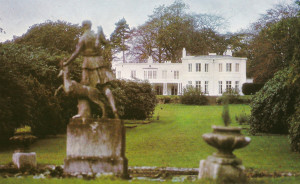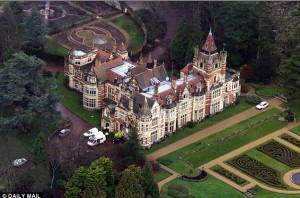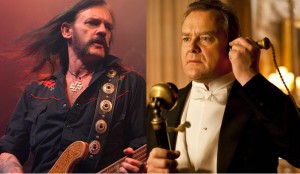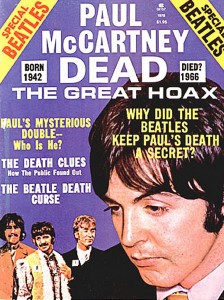 Yes, Paul was dead. And his bandmates covered up his disappearance by replacing him with a double — because they loved him. And, more importantly, because they loved the record-buying fans who loved him. The story of faux Paul (let’s call him Faul ) was so full of cryptic elements, how could a girl like me who savored all things dark and mysterious NOT believe it! In fact, 47 years later, I still wonder if it may be true. L.O.L., so to speak.
Yes, Paul was dead. And his bandmates covered up his disappearance by replacing him with a double — because they loved him. And, more importantly, because they loved the record-buying fans who loved him. The story of faux Paul (let’s call him Faul ) was so full of cryptic elements, how could a girl like me who savored all things dark and mysterious NOT believe it! In fact, 47 years later, I still wonder if it may be true. L.O.L., so to speak.
The granddaddy of all rock myths goes like this: On November 9, 1966, Paul storms out of Abbey Road studios in a huff, and on his way home stops to pick up a female hitchhiker named Rita. Upon realizing the identity of the driver, the girl throws her arms around him, causing him to swerve and wreck his Aston-Martin on a rain-soaked street. Both die in the fiery crash. Paul is decapitated.
The original rumor may have stemmed from an incident on January 7, 1967. That night, Paul and assorted members of the Rolling Stones were traveling in Mick Jagger’s car, headed to a party at the home of Keith Richards. A Moroccan art gallery assistant named Mohammed Hadjij was also en route to the party, driving Paul’s black Mini Cooper, which was rumored to be full of drugs. He crashed the car on the M1 motorway outside of London and was hospitalized for minor injuries. Because the Mini was highly customized to include arm chairs, a wet bar and smoke-tinted glass, those on the scene recognized it as Paul’s car, and word began to spread that the Beatle may have been killed.
Flash forward to August 1968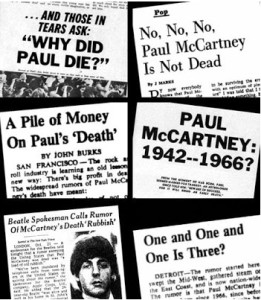 : A singer, songwriter and producer named Terry Knight attends a Beatles recording session at Abbey Road studios, and sees the now-bickering band in action. Sensing Paul’s frustration, and viewing him as the injured party, he goes on to write a song called “Saint Paul.” One lyric — Sir Isaac Newton said it [an apple] had to fall — presumably referred to the eventual demise of Apple Records. The song fueled the growing “Paul is Dead” rumors, which had now spread to the U.S.
: A singer, songwriter and producer named Terry Knight attends a Beatles recording session at Abbey Road studios, and sees the now-bickering band in action. Sensing Paul’s frustration, and viewing him as the injured party, he goes on to write a song called “Saint Paul.” One lyric — Sir Isaac Newton said it [an apple] had to fall — presumably referred to the eventual demise of Apple Records. The song fueled the growing “Paul is Dead” rumors, which had now spread to the U.S.
Articles theorizing Paul’s death begin appearing in college newspapers, first in Drake University’s Times-Delphic, and then in Northern Illinois University’s Northern Star. But the story really exploded when Eastern Michigan University student Tom Zarski phoned Russ Gibb of WKRN-FM in Detroit, and told the DJ to play the Beatles’ “Revolution 9” backwards. Listeners were shocked to hear the lyric turn me on dead man.
 Within a few days of this broadcast, University of Michigan student Fred LaBour published a satirical article in The Michigan Daily student paper, titled “McCartney Dead; New Evidence Brought to Light.” He alleged that Paul was replaced by a Scottish orphan named William Campbell who had once won a McCartney lookalike contest. The mounting evidence of a cover-up inspired a two-hour Detroit radio program called “The Beatle Plot,” which aired in October 1969.
Within a few days of this broadcast, University of Michigan student Fred LaBour published a satirical article in The Michigan Daily student paper, titled “McCartney Dead; New Evidence Brought to Light.” He alleged that Paul was replaced by a Scottish orphan named William Campbell who had once won a McCartney lookalike contest. The mounting evidence of a cover-up inspired a two-hour Detroit radio program called “The Beatle Plot,” which aired in October 1969.
By now, major news outlets like the London Times, the New York Times, and the Los Angeles Times started to take notice. Satirical songs even began popping up: “The Ballad of Paul” by the Mystery Tour; “Brother Paul” by Billy Shears and the All Americans; and “So Long Paul” by Werbley Finster, a pseudonym for José Feliciano.
Rumors continued through the fall of 1969 and into 1970, with conspiracy theorists finding ever-increasing evidence of Paul’s death by scouring Beatle songs and album covers for hidden clues. Here are a few of the major ones:
On the back cover of the Sgt. Pepper album, Paul is wearing a badge with words that appear to be “OPD,” which is British police jargon for “Officially Pronounced Dead.” (The patch actually stands for Ontario Police Department; the squad gave the button to Paul when he toured Canada).
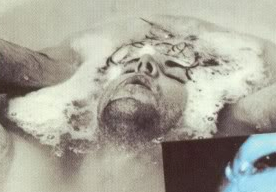 On the same album, the character standing behind Paul is raising his hand above the Beatle’s head. This is supposedly a symbol of death in some religions. And a tiny Aston Martin convertible (the car in which Paul was killed) appears on the lap of a doll in the right-hand side of the cover.
On the same album, the character standing behind Paul is raising his hand above the Beatle’s head. This is supposedly a symbol of death in some religions. And a tiny Aston Martin convertible (the car in which Paul was killed) appears on the lap of a doll in the right-hand side of the cover.
In the fade-out of “Strawberry Fields Forever,” John can be heard saying I buried Paul. He later claimed he was saying cranberry sauce.
On the cover of the “Magical Mystery Tour” album, we know that Paul is the walrus, because John confirmed it in his song “Glass Onion.” Conspiracists falsely proclaimed that the Greek word for corpse is “walrus.”
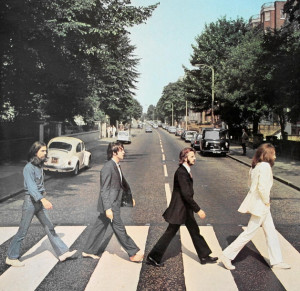 In fact, the title of “Glass Onion” supposedly sprang from British slang for the glass handles, known as glass onions, that were affixed to 19th century caskets. Thus, Paul is in the casket, looking through a glass onion.
In fact, the title of “Glass Onion” supposedly sprang from British slang for the glass handles, known as glass onions, that were affixed to 19th century caskets. Thus, Paul is in the casket, looking through a glass onion.
The poster that accompanied the “White Album” features a photo of Paul soaking in a tub of water. It appears that his decapitated head is floating in blood.
In a clip from the “Magical Mystery Tour” film, all four Beatles are wearing red roses on the lapels of their white tuxedoes, except for Paul, who sports a black one.
The “Abbey Road” album is rife with clues. The cover photo of the four Beatles walking across the road is seen as a funeral procession. John, in white, is the priest; Ringo, in black, is the undertaker; and George, in jeans, is the gravedigger. And barefoot Paul, out of step with the others, is the corpse, because Italians supposedly bury their dead without shoes and socks. Paul is holding his final cigarette in his right hand. But we know the character on the album cover is a fake, because the original Paul was left-handed.
In the background of the “Abbey Road” cover photo we see a white Volkswagen with the license plate “28IF.” Paul would have been 28 at the time the photo was taken — IF he had lived. (That famous Volkswagen was sold at auction in 1986 for over $4,000).
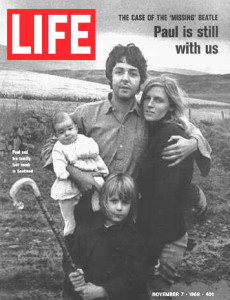 In a 1969 issue of Life magazine, Paul was pressed to address the issue. He said: “It is all bloody stupid. I picked up that OPD badge in Canada. It was a police badge. Perhaps it means Ontario Police Department or something. I was wearing a black flower because they ran out of red ones. It is John, not me, dressed in black on the cover and inside of ‘Magical Mystery Tour.’ On ‘Abbey Road’ we were wearing our ordinary clothes. I was walking barefoot because it was a hot day. The Volkswagon just happened to be parked there…Perhaps the rumor started because I haven’t been much in the press lately. I have done enough press for a lifetime, and I don’t have anything to say these days.”
In a 1969 issue of Life magazine, Paul was pressed to address the issue. He said: “It is all bloody stupid. I picked up that OPD badge in Canada. It was a police badge. Perhaps it means Ontario Police Department or something. I was wearing a black flower because they ran out of red ones. It is John, not me, dressed in black on the cover and inside of ‘Magical Mystery Tour.’ On ‘Abbey Road’ we were wearing our ordinary clothes. I was walking barefoot because it was a hot day. The Volkswagon just happened to be parked there…Perhaps the rumor started because I haven’t been much in the press lately. I have done enough press for a lifetime, and I don’t have anything to say these days.”
Eventually the Paul is Dead rumors faded, as new rock hoaxes emerged. Actually, McCartney got off easy compared to the rumor that haunted Rod Stewart for so many years (more on this in a future post).
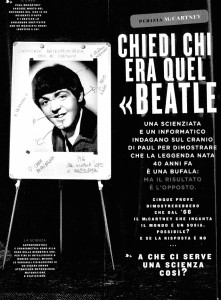 Yet, now and again someone comes forth with a new take on the matter. The August 2009 Italian issue of Wired magazine reported that two forensic scientists – Francesco Gavazzeni and Carlesi Gabriella – conducted a biometrical analysis of Paul’s face, via photos taken before and after the alleged 1966 car accident. They had set out to prove once and for all that Paul’s death was a hoax. But after careful analysis of his skull, ears, palate, teeth, and curve of his jaw, they concluded that the Beatle really was replaced by lookalike.
Yet, now and again someone comes forth with a new take on the matter. The August 2009 Italian issue of Wired magazine reported that two forensic scientists – Francesco Gavazzeni and Carlesi Gabriella – conducted a biometrical analysis of Paul’s face, via photos taken before and after the alleged 1966 car accident. They had set out to prove once and for all that Paul’s death was a hoax. But after careful analysis of his skull, ears, palate, teeth, and curve of his jaw, they concluded that the Beatle really was replaced by lookalike.
Of course, there are those who say Paul has been dead for decades – in terms of the inferior quality of his post-Beatles work. But let’s give him a break. To paraphrase Ringo: if it hadn’t been for Paul coaxing his sometimes sluggish mates into the studio, there wouldn’t have been nearly as many Beatle albums. Only Bona Fide Paul could have lit that spark.
Here’s the hilarious “The Ballad of Paul” – complete with clues – by The Mystery Tour:
© Dana Spiardi, April 1, 2013
]]>Where a rock-n-roll martyr plays
You’ll find the enchanted neighborhood
Of Brian Jones’s drug-haze days.
Brian the posh, Brian the posh,
A randy little dandy – all fine, divine.
He’s Brian the posh, Brian the posh,
A ritzy little glitzy old soul.
I’d hate like hell to be sued by the Disney Empire for parodying their Winnie the Pooh tune, but what better way to introduce the tale of a Rolling Stone who spent his final days in the former domain of Pooh’s creator, author A. A. Milne? Were British society highbrows appalled by the idea of a long-haired rock guitarist/drug deviant romping the idyllic grounds that inspired Milne to create cutesy make-believe animal playmates for his son Christopher Robin? Probably. But it mattered not. The late 1960s marked the dawn of the Age of the Rock God, and like the deities of yore, they required grand pantheons. They found them in the form of once-venerated estates that dotted the tranquil British countryside. And the old gentry had no choice but to get over it.
In November 1968, Rolling Stones founder, multi-instrumentalist, and fashion plate Brian Jones purchased the Milne estate – Cotchford Farms in East Sussex- for £35,000 ($679,000 today). The 26-year-old musician was a train wreck of a man. He’d already been convicted twice for drug possession and had fathered at least five children with five different women by the time he was 23. British blues pioneer Alexis Korner described the once-beautiful lad as now looking like “a fat, mummified Louis XIV.” What better place for the delicate Brian to relax and play his music than the “House at Pooh Corner”?

He quickly set about renovating the mid-16th century abode to his mod liking. Several items from Brian’s upgrades remain today, including panes of colored glass and a still-functioning pink fluorescent light tube he put in one of the bathrooms. And of course, there’s the pool where Mr. Jones drowned on July 3, 1969, just weeks after his bandmates fired him for bad behavior. Whether Jones’s drowning was the result of his prodigious drug and alcohol intake, or a scuffle between him and building foreman Frank Thorogood, we’ll never know. But the death certainly casts an eerie shadow over the bucolic setting.
Alastair Johns, who purchased Cotchford Farm in 1970 and remained its guardian for 42 years, has plenty of interesting tales of Brian Jones fans who dropped by the house, unannounced, to pay homage to the rock star. He once told the Daily Telegraph, “On the whole the Brian Jones lot are incredibly nice and polite. They apologize for the intrusion. The Winnie the Pooh bunch, on the other hand, think they own the place. One afternoon we caught a couple in the garden who had lined up 16 teddy bears to photograph.”
But oh, that famous pool! Old utility bills show that Brian Jones purchased 4,000 gallons of oil trying to heat it during the 9 months he lived there. To finance its renovation, Johns and his wife Harriet sold the original pool tiles to the musician’s fans for £100 each. Imagine owning a piece of Brian’s death tank!
The 3,779-square-foot home and its 9.5 acres was put up for sale in 2014, listed at £2 million, or about $3.15 million. Picture yourself sitting in Christopher Robin’s garden, sipping port or smoking pot, and daydreaming about Eeyore and Piglet and Tigger, to the strains of Brian’s sitar work on “Paint it Black.” It doesn’t get any more surreal than that, folks.
Not to be upstaged by the guitarist he sacked, Mick Jagger spent £55,000 to acquire his own ostentatious crib, Stargroves, in 1970. This Hampshire County estate was the home of the Goddards, a landed family, from 1565 until about 1830. Oliver Cromwell, the 17th century Lord Protector of the Commonwealth of England, Scotland and Ireland, once slept there – back when it was quiet. Three hundred years later, Stargroves would be overrun with racket, when the Stones, Led Zeppelin, Deep Purple, and other rock groups recorded songs in a mobile recording studio installed on the grounds. Rod Stewart bought Stargroves in 1998, but never moved in because he was in the process of divorcing wife number 2, Rachel Hunter.
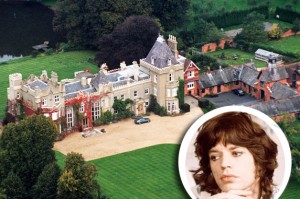
Several other Rolling Stones also inhabited pedigreed mansions. Low-profile drummer Charlie Watts purchased the one-time estate of Baron Shawcross, the lead British prosecutor at the Nuremberg War Crimes tribunal. And in 1968 Stones bassist Bill Wyman acquired Gedding Hall, below, a stately home that boasted a moat (alligators not included). Britain’s famous twin-brother gangsters, Ronnie and Reggie Kray, fled to the hall after killing Jack ‘The Hat’ McVitie in 1967.

One month after John Lennon married Yoko Ono, the Beatle purchased a quaint little love nest: the 72-acre Tittenhurst Park in Sunningdale, Ascot. The couple bought the £145,000 estate from Peter Cadbury, whose father Egbert was managing director of the famous chocolate company that bears his surname.
However, it turned out not to be such a sweet deal. The Lennons ended up spending twice the purchase price on renovations and additions, including the creation of a lake and the installation of a sound studio where John recorded his Imagine LP. He spent a mere two years in his stately home, selling it to Ringo Starr after he permanently relocated to New York City in 1971.
Beatle George Harrison may have felt musically overshadowed by bandmates Lennon and McCartney, but when it came to real estate, he trumped them all. In 1970 he purchased the grand Friar Park, a 120-room Victorian neo-Gothic mansion in Henley-on-Thames. Sir Frank Crisp, an eccentric lawyer, first owned the estate and designed many of its attractions, including an Elizabethan garden, a white garden, a Japanese garden, a rock garden, plus an assortment of unusual topiary and exotic plants. Other features included fountains, whimsical statuary, a sandstone replica of the Matterhorn, and caverns under the property’s lakes that revealed waterways and a grotto!
Upon Crisp’s death the estate passed to an order of Roman Catholic nuns who abandoned the home in the late 1960s, leaving it in such a state of disarray that it was scheduled for demolition. George and his first wife Patti set out to slowly renovate the massive estate. They completed only a handful of the many rooms, one of which George converted to a 16-track recording studio where he produced all of his albums from 1973 onward.
Through the years the Beatle became a passionate gardner, lovingly tending the grounds right up until his death in 2001. His second wife, Olivia, is devoted to maintaining the gardens that brought her husband such pleasure.
From peaceful gardens we move on to unholy houses — in particular, one purchased by Led Zeppelin’s Jimmy Page in 1971. The guitar wizard had long been fascinated with the work of English occultist, poet, novelist, and satanist Aleister Crowley. Between 1899 and 1913, the self-proclaimed “most wicked man in the world” owned Boleskin House, located on the shore of Loch Ness in Scotland. The late 18th century secluded estate was known to be a center of black magic and sorcery, and was the scene of several tragic deaths, both before and after Crowley’s ownership.
Jimmy Page once called Crowley “a misunderstood genius of the 20th century.” He believed the estate was haunted, but he’s long maintained that the house was possessed of demons well before Crowley purchased it to perform his black magic rituals. Said Page in a 1975 Rolling Stone interview, “There were two or three owners before Crowley moved into it. It was also a church that was burned to the ground with the congregation in it. Strange things have happened in that house that had nothing to do with Crowley. The bad vibes were already there. A man was beheaded there, and sometimes you can hear his head rolling down.” Well, at least now you know what inspired some of those mystical Zeppelin tunes and symbols.
Over the years, many a stiff-lipped British Lord and Lady no doubt proclaimed “there goes the neighborhood” when nouveau rich rockers began running wild in the country. If Downton Abbey stays on the air long enough, will we see benevolent Lord Grantham selling out to bad-ass Lemmy Kilmister?
This delightful music video of George Harrison’s “Crackerbox Palace” was filmed on the lovely grounds of Friar Park in 1976. Monty Python member Eric Idle directed it. In 1978, George put up the entire Friar Park estate as financial collateral to fund the Pythons’ “Life of Brian” after the project’s original investors backed out. Why? He said he simply wanted to see the film. Idle called it “the most expensive movie ticket in history.”
© Dana Spiardi, Jan 3, 2015
]]>
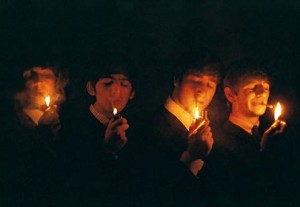 Even if Bob Dylan hadn’t introduced The Beatles to marijuana at New York’s Delmonico Hotel, the boys would have lit up soon enough. From that August 1964 night onward, “let’s have a laugh” quickly became their code phrase for “let’s have a toke.” And laugh they did. At least until the infamous Sgt. Norman Pilcher and his drug-sniffing dogs Yogi and BooBoo came snooping around their London abodes.
Even if Bob Dylan hadn’t introduced The Beatles to marijuana at New York’s Delmonico Hotel, the boys would have lit up soon enough. From that August 1964 night onward, “let’s have a laugh” quickly became their code phrase for “let’s have a toke.” And laugh they did. At least until the infamous Sgt. Norman Pilcher and his drug-sniffing dogs Yogi and BooBoo came snooping around their London abodes.
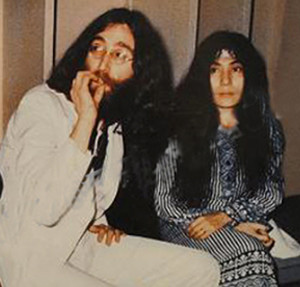 The cop and his canines found 12 grams of cannabis in a binocular case in John and Yoko’s apartment in October 1968, and a few months later discovered a small amount in one of George’s shoes during a raid on his home. The response of “The Quiet Beatle” to this search and seizure? “I’m a tidy man,” he said. “I keep my socks in the sock drawer and stash in the stash box. It’s not mine.” Nice try, George. (Some say Sgt. Pilcher was the namesake of Semolina Pilchard, who climbed the Eiffel Tower in John’s song “I Am the Walrus.”)
The cop and his canines found 12 grams of cannabis in a binocular case in John and Yoko’s apartment in October 1968, and a few months later discovered a small amount in one of George’s shoes during a raid on his home. The response of “The Quiet Beatle” to this search and seizure? “I’m a tidy man,” he said. “I keep my socks in the sock drawer and stash in the stash box. It’s not mine.” Nice try, George. (Some say Sgt. Pilcher was the namesake of Semolina Pilchard, who climbed the Eiffel Tower in John’s song “I Am the Walrus.”)
Paul was the most prolific pot puffer of the bunch, busted 5 times in all. Actually, wife Linda took the rap on one occasion, when cops pulled the couple over for running a red light in L.A. and found cannabis in their Lincoln Continental.
Paul’s first bust, in Sweden in 1972, cost him $2,000. Fear of serving time in prison for such an offense supposedly inspired him to write “Band on the Run” (stuck inside these four walls / sent inside forever.) His second arrest came in 1973, when police found more than your average garden-variety weeds growing in the soil of his Scotland farm. Paul pleaded agricultural ignorance, saying he was merely growing seeds sent to him by a fan. How was he to know they would sprout cannabis?
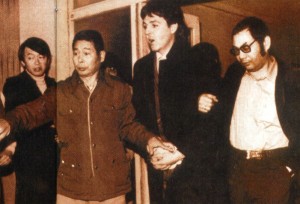 His famous drug bust at Japan’s Narita Airport in January of 1980 landed him in a Tokyo prison for 9 days. (It’s been rumored that Yoko set him up by tipping off airport security officials ahead of time.) Interestingly, the Japanese were among the world’s biggest Beatle fans. They probably bowed like crazy all the while they were charging him. I love the fantasy of Paul wrapped in a blue and white yukata, sitting on a jail cell tatami mat, taking song requests from prison guards. “Beatle-san, prease pray “Prease, Prease Me.” Arigatou gozaimasu!
His famous drug bust at Japan’s Narita Airport in January of 1980 landed him in a Tokyo prison for 9 days. (It’s been rumored that Yoko set him up by tipping off airport security officials ahead of time.) Interestingly, the Japanese were among the world’s biggest Beatle fans. They probably bowed like crazy all the while they were charging him. I love the fantasy of Paul wrapped in a blue and white yukata, sitting on a jail cell tatami mat, taking song requests from prison guards. “Beatle-san, prease pray “Prease, Prease Me.” Arigatou gozaimasu!
You’d think he would have finally learned a tough lesson about the dangers of pot-on-the-go, but NO. Almost four years to the date after the Narita Airport arrest, he and Linda were busted in Barbados. AND, returning home from the trip, Linda was arrested at London’s Heathrow Airport for the prior day’s incident! As Paul’s “Uncle Albert/Admiral Halsey” lyrics testify, he truly believed in hands across the water, heads across the sea.
As Americans cheer (or jeer) the marijuana legalization bandwagon that’s moving from state to state, it’s interesting to note that as early as 1967, prominent Britons were petitioning the government for the reform of cannabis laws.
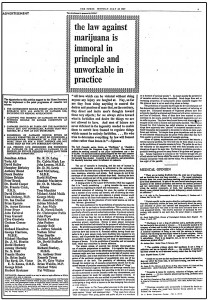 The Beatles and their manager Brian Epstein were 5 of the 64 people – many of whom were medical doctors and pillars of society – to sign a petition that appeared as a full-page ad in The Times on July 24, 1967, titled “The law against marijuana is immoral in principle and unworkable in practice.” It advocated research into the medicinal uses of marijuana, demanded that the smoking of weed on private premises no longer be considered an offense, and asked the government to commute the sentences of those convicted of using cannabis.
The Beatles and their manager Brian Epstein were 5 of the 64 people – many of whom were medical doctors and pillars of society – to sign a petition that appeared as a full-page ad in The Times on July 24, 1967, titled “The law against marijuana is immoral in principle and unworkable in practice.” It advocated research into the medicinal uses of marijuana, demanded that the smoking of weed on private premises no longer be considered an offense, and asked the government to commute the sentences of those convicted of using cannabis.
It’s no surprise that Paul paid for the ad, which cost about $2,300. It inspired a public debate that actually did liberalize laws against marijuana use in Britain.
But today, according to Wikipedia, it’s still illegal to “possess, grow, distribute or sell [cannabis] in the U.K. without appropriate licenses.” Charges range from a “warning” and/or fines, to 5 years in prison for possession, and up to 14 for production and trafficking.
Still, both the U.K. and U.S. have become a lot more accepting and forgiving of former drug offenders. After all, the Queen knighted pot-head Paul, and the American public elected one-time hash-hound Barack Obama as President.
And as for Mr. McCartney, it appears he’s retired his roach clips, pipes and Zig-Zag papers for good. In 2012 he told The Daily Mail: “I smoked my share. When you’re bringing up a youngster [10-year-old daughter Beatrice], your sense of responsibility does kick in, if you’re lucky, at some point.” Ah, but the nose knows better. During a concert in 2013, he stopped mid-set and said, “That’s some pretty good weed I can smell up here. “Whew! What are you doing to me?”
Paul invited us all to get “Hi, Hi, Hi” with him in 1976! The video features his lovely Linda and the band Wings. Oh, yeah…Paul really was the cute Beatle.
© Dana Spiardi, July 25, 2014
]]>
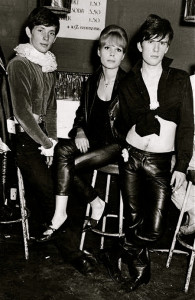 So impressed was Klaus with the sight and sound of those uninhibited musicians that he returned to the Kaiserkeller the following night with Astrid and their friend Jürgen Vollmer in tow. “For me, it was like hearing every great rock-n-roll tune there had ever been, sung by all the greatest singers,” said Klaus in Phillip Norman’s book John Lennon: The Life. “These Liverpool people were to us like magic.”
So impressed was Klaus with the sight and sound of those uninhibited musicians that he returned to the Kaiserkeller the following night with Astrid and their friend Jürgen Vollmer in tow. “For me, it was like hearing every great rock-n-roll tune there had ever been, sung by all the greatest singers,” said Klaus in Phillip Norman’s book John Lennon: The Life. “These Liverpool people were to us like magic.”
The stylish, black-clothed Germans, who called themselves Exies for their interest in existentialism, would end up having a major impact on the Liverpool boys in their early days of working the rough Hamburg club circuit. Astrid quickly fell in love with the group’s ill-fated bass player Stu Sutcliffe. She cut his hair in the combed-forward style sported by the über-hip Klaus and Jürgen; the other Beatles soon adopted the daring look that would become their trademark. Astrid exposed the boys to a world of bohemian sophistication and took the first professional photos of the band. They remain the most hauntingly beautiful Beatle pictures of all time, portraying hungry young artists on the cusp of stardom.
Klaus would go on to become a lifelong friend of the band, contributing his musical and artistic talents during the group’s heyday and long into the boys’ solo years. He is perhaps best known as the illustrator and designer of the cover sleeve of the group’s 1966 “Revolver” LP, which features a collage of kitschy photos whimsically sprouting from line drawings of the four fab heads. The design earned him a Grammy Award for best graphic art. Klaus later designed album covers for The Bee Gees, Gary Wright (Spooky Tooth), Sonny Rollins and Jackie Lomax.
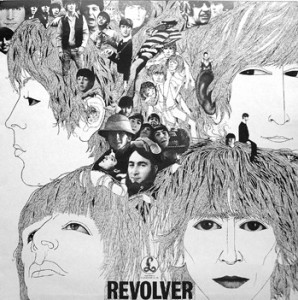 He lived with George and Ringo in their London flat for a time, learned to play bass guitar, and spent three years as bassist in the Manfred Mann band, having turned down offers to play with The Moody Blues and The Hollies. Just prior to the Beatles’ breakup, he joined John and Yoko’s Plastic Ono Band to perform at the 1969 Live Peace in Toronto concert, and later took part in George’s groundbreaking 1971 Concert for Bangladesh. He was held in such high esteem that he was once rumored to be a replacement for Paul McCartney in a reconstructed Beatles band called The Ladders.
He lived with George and Ringo in their London flat for a time, learned to play bass guitar, and spent three years as bassist in the Manfred Mann band, having turned down offers to play with The Moody Blues and The Hollies. Just prior to the Beatles’ breakup, he joined John and Yoko’s Plastic Ono Band to perform at the 1969 Live Peace in Toronto concert, and later took part in George’s groundbreaking 1971 Concert for Bangladesh. He was held in such high esteem that he was once rumored to be a replacement for Paul McCartney in a reconstructed Beatles band called The Ladders.
In the early ’70s Klaus moved to L.A. and kept busy as a session man on projects by Harry Nilsson, Carly Simon, James Taylor, Lou Reed, Randy Newman and many others. He collaborated with each individual Beatle, playing on many of their solo LPs. In 1995 Apple Records asked Klaus and fellow artist Alfons Kiefer to design the cover art for the Beatles’ “Anthology” albums. And, most recently, he spoke of his close friendship with “the spiritual Beatle” in Martin Scorsese’s HBO documentary, “George Harrison: Living in the Material World.”
Klaus Voormann is an elegant, soft-spoken man who never abused his special relationship with the Beatles. He’s lived a pretty amazing life, for a guy who just happened to stumble into a bar 56 years ago.
Here’s more about the talented Mr. Voormann, from the documentary “All You Need is Klaus.”
Here is one of Klaus’s many drawings of the Beatles’ early days in Hamburg. This was their “living arrangement” in the back of “The Bambi” cinema, where they washed up in the men’s room sinks. Click here to see more of his sketches.

© Dana Spiardi, April 29, 2014
]]>
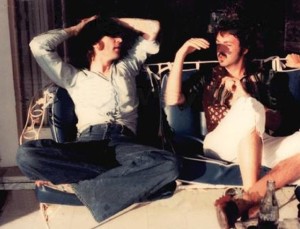 Well, as it turns out, they sat in the Lennons’ living room and watched Saturday Night Live! Imagine their surprise when SNL producer Lorne Michaels appeared on their TV screen, announcing an offer to pay the Beatles $3,000 to come together and perform three songs on his show! He held up a check and said, “NBC has authorized me to offer you a certified check for $3,000….you can divide it anyway you want. If you want to give Ringo less, that’s up to you.” What a commentary on the creative pecking order, albeit at poor Ringo’s expense!
Well, as it turns out, they sat in the Lennons’ living room and watched Saturday Night Live! Imagine their surprise when SNL producer Lorne Michaels appeared on their TV screen, announcing an offer to pay the Beatles $3,000 to come together and perform three songs on his show! He held up a check and said, “NBC has authorized me to offer you a certified check for $3,000….you can divide it anyway you want. If you want to give Ringo less, that’s up to you.” What a commentary on the creative pecking order, albeit at poor Ringo’s expense!
John later told David Sheff, author of the book All We Are Saying, “He [Paul] was visiting us at our place in the Dakota. We were watching it [SNL] and almost went down to the studio, just as a gag. We nearly got into a cab, but we were actually too tired.”
WHAT? Two healthy guys in their mid-thirties, too tired? From what…smoking too much weed? How dare they deprive the world of what would have been the biggest event in rock history! Oh, well. Yoko would have tagged along and ruined the whole thing anyway.
A month later, Michaels again tried to lure the Beatles, this time with a sum of $3,200 and an offer by NBC to pay for their hotel accommodations! He asked SNL announcer Don Pardo to provide more details. Here’s the hilarious transcript:
First of all, the lads from Liverpool will be picked up by a radio-dispatched Checker cab that will whisk them to the Cross Town Motor Inn, located in the heart of New York’s fashionable garment district. Once there, they will check in, in the recently renovated lobby; and then it’s off to their rooms via round-the-clock elevator service. They’ll be treated like royalty, as pitchers of ice water are hand-delivered to their rooms, and they can drink that water from glasses sanitized for their convenience. Oops — Ringo spilled a little something on his jacket? No problem — not with prompt forty-eight-hour dry cleaning service! ‘In by Tuesday, out by Thursday.’ And let’s just put a shine on those shoes, too, with a free shoe shine cloth. And, Lorne, since the Beatles will be staying in separate rooms, the four Mop Tops can speak to each other as much as they want because there is no charge for room-to-room calls. And, after a hard day’s night, the Beatles can sleep as late as they like with a leisurely checkout time of 10 A.M. That’s the Cross Town Motor Inn, a hotel tradition, hosting New York’s visitors since 1971. Yeah, yeah, yeah! Back to you Lorne!
Okay, pretty funny, but the huge sums offered by other industry moguls were nothing to scoff at. Three months before Lorne Michaels’ offer, promoter Bill Sargent tried to bait the Beatles with a payment of $50 million. And later in the year, Sid Bernstein, the man who promoted the Beatles’ early U.S. tours, offered a staggering $230 million for them to perform a one-time-only charity concert. The four turned it down, although sources say Paul considered it.
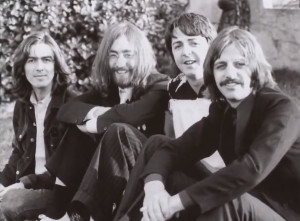 The closest thing to a Beatles reunion took place on May 19, 1979, when Paul, George, and Ringo jammed at the wedding of Eric Clapton and Pattie Boyd (George’s ex-wife). They performed shaky, alcohol-laced renditions of “Get Back,” “Sgt. Pepper’s Lonely Hearts Club Band,” and “Lawdy Miss Clawdy.” But where was John? He and Clapton had been tight in the early ’70s, when the guitarist performed with John at his Live Peace in Toronto concert. Did Eric and Pattie forget to send John an invitation? Did Yoko receive it and toss it in the trash? In Peter Doggett’s book, You Never Give Me Your Money, Clapton said, “John later phoned me to say that he would have been there too if he had known about it.” Sadly, all hopes for a Beatles reunion were abandoned on December 8, 1980, when John was assassinated as he entered his apartment.
The closest thing to a Beatles reunion took place on May 19, 1979, when Paul, George, and Ringo jammed at the wedding of Eric Clapton and Pattie Boyd (George’s ex-wife). They performed shaky, alcohol-laced renditions of “Get Back,” “Sgt. Pepper’s Lonely Hearts Club Band,” and “Lawdy Miss Clawdy.” But where was John? He and Clapton had been tight in the early ’70s, when the guitarist performed with John at his Live Peace in Toronto concert. Did Eric and Pattie forget to send John an invitation? Did Yoko receive it and toss it in the trash? In Peter Doggett’s book, You Never Give Me Your Money, Clapton said, “John later phoned me to say that he would have been there too if he had known about it.” Sadly, all hopes for a Beatles reunion were abandoned on December 8, 1980, when John was assassinated as he entered his apartment.
When the Beatles played their impromptu “concert” on the rooftop of the Apple Records building during the “Let It Be” recording sessions in January 1969, little did anyone know it would be the final live performance of the greatest and most influential band in history. It was the world’s finest free concert. Priceless.
Here’s Lorne Michaels, offering The Beatles the BIG check, on April 24, 1976:
© Dana Spiardi, April 24, 2013
]]>
